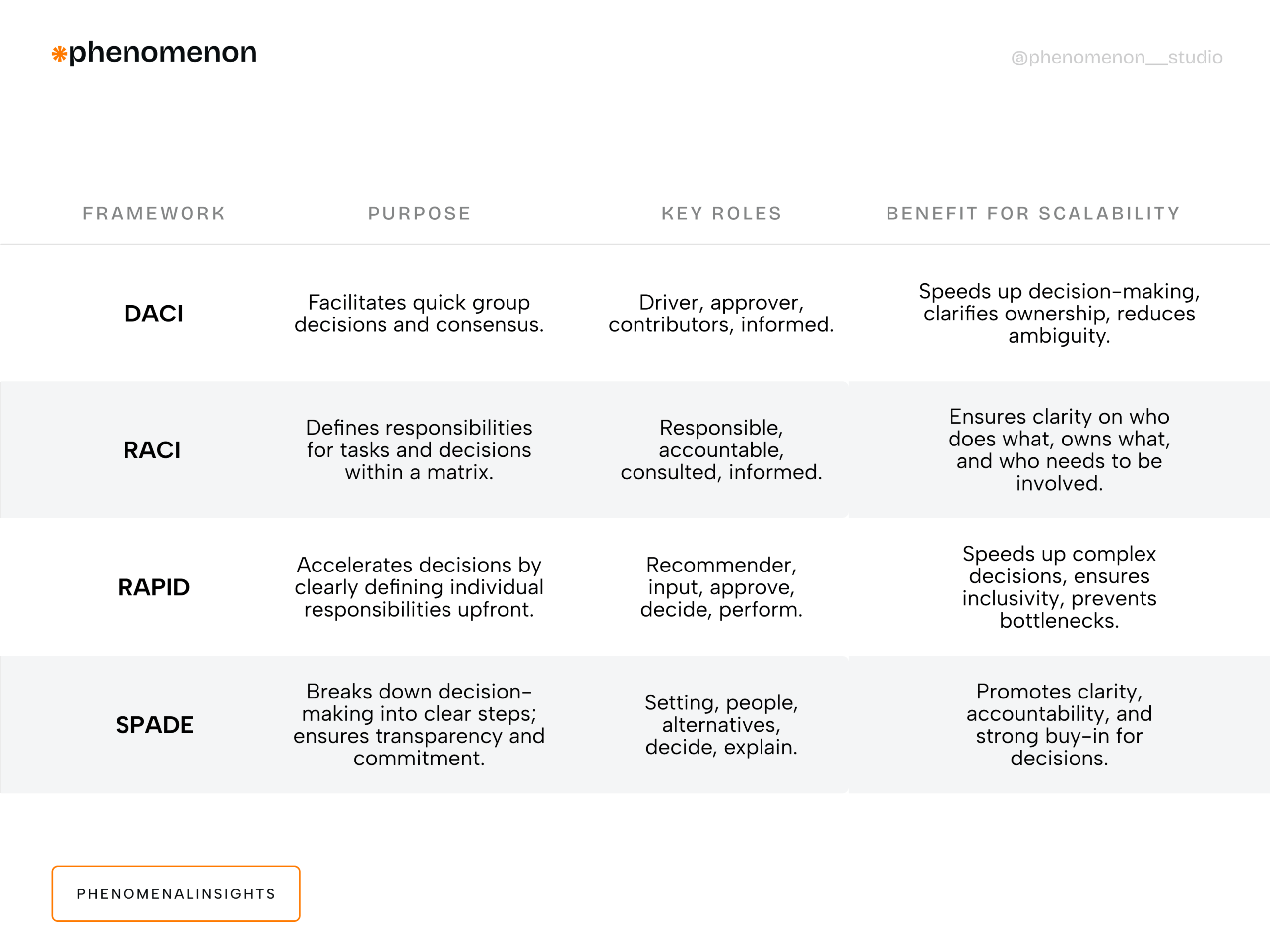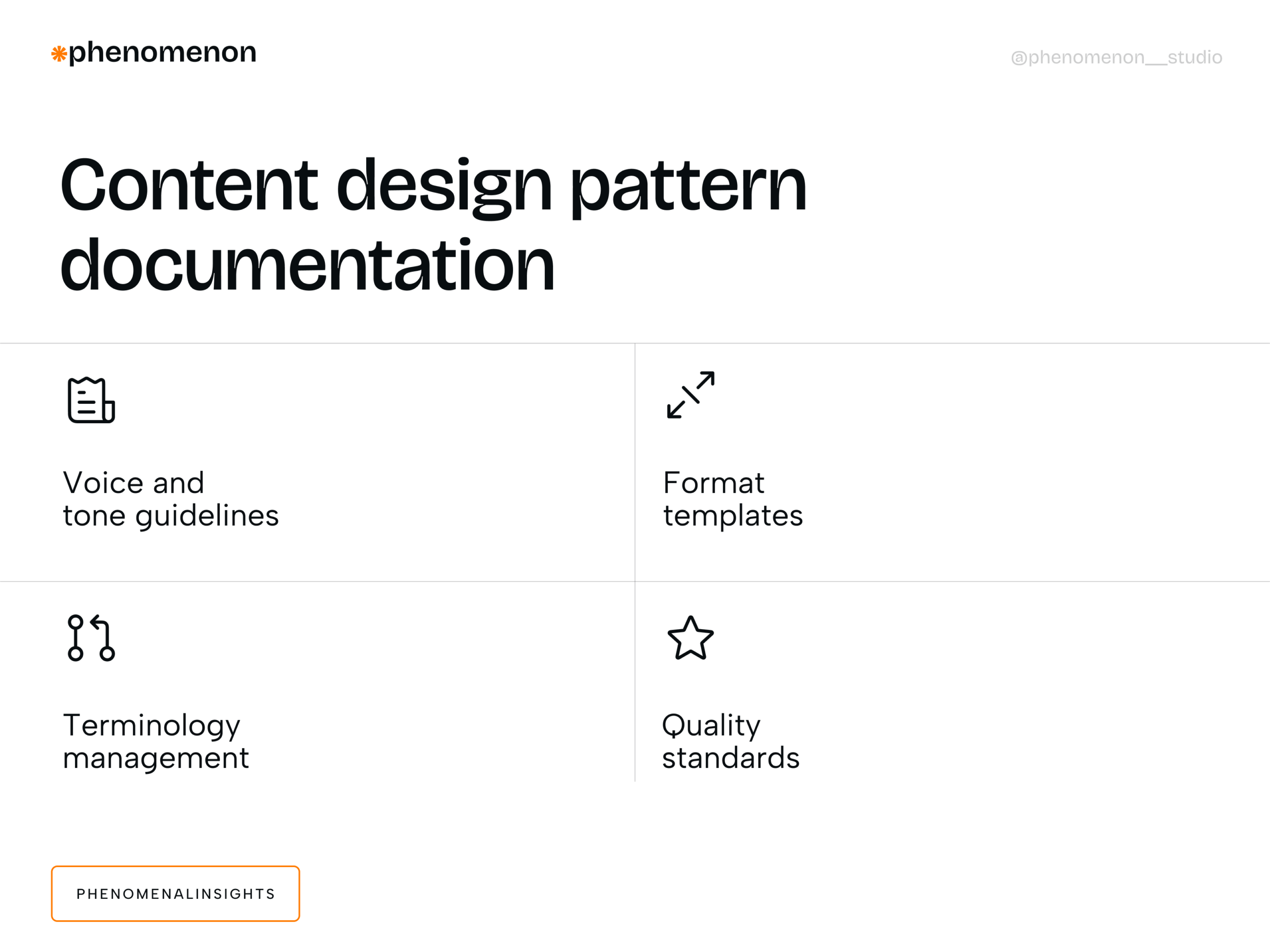Discover why software design patterns, decision frameworks, and content strategy matter more than UI. Learn to document invisible systems that enable scalable growth.
Your app crashes during peak traffic. Your team debates the same decisions repeatedly. Your content feels scattered across platforms. Before you redesign that interface, consider this: the real bottleneck might not be in your user interface at all. Many organizations focus on ui design and ux design as the go-to solutions, but these are not always the root cause of deeper issues.
Scalable growth depends on more than polished buttons and smooth animations. A ui ux design agency or design company often focuses on creating engaging user experiences for clients across diverse industries, but underlying patterns are just as critical. While UI patterns get most of the attention, three critical pattern types often go undocumented: software design patterns, organizational decision-making frameworks, and content strategy patterns. These invisible systems determine whether your organization can handle growth or crumbles under pressure.
This post reveals how to document these non-UI patterns effectively, turning them into scalable assets that compound your team’s efficiency over time. Addressing projects and business needs requires the ability and design skills to go beyond just the UI.
Why Non-UI Patterns Matter More Than You Think
Software design patterns, decision-making frameworks, and content strategies form the backbone of scalable organizations. They operate behind the scenes, influencing everything from code maintainability to team productivity to user engagement. User-centered and user experience design principles, often championed by a design agency, are essential for supporting scalable growth.
Consider this scenario: your development team writes clean, functional code, but every new feature requires extensive refactoring. Your leadership team makes decisions quickly, but team members remain confused about their roles. Your content performs well individually, but lacks consistency across channels. These problems stem from undocumented patterns, not interface design.
When organizations focus exclusively on UI documentation, they miss opportunities to systematize their most important processes. The result? Teams reinvent solutions, waste time on preventable mistakes, and struggle to maintain quality as they grow. Aligning product strategy and creating efficient processes is crucial to avoid these pitfalls.
Design Foundations for Scalable Growth
Establishing a robust design foundation is essential for companies that want to achieve scalable growth in today’s competitive digital landscape. At the core of this foundation lies a well-structured design system—a comprehensive set of standards, components, and guidelines that ensure consistency across all digital platforms. By implementing a unified design system, businesses can deliver a seamless user experience, regardless of where or how users interact with their digital products.
A strong design system empowers teams to create user interfaces that are not only visually appealing but also highly usable. Consistent interface design builds trust and familiarity, making it easier for users to navigate digital products and complete their goals. This consistency is key to driving user engagement, as users are more likely to return to platforms that feel intuitive and reliable.
Moreover, a thoughtful approach to user interface design goes beyond aesthetics. It directly influences the usability and accessibility of digital products, ensuring that every interaction is smooth and satisfying. When companies prioritize both the visual appeal and functionality of their interfaces, they create digital experiences that stand out in the market and support long-term business growth.
Ultimately, investing in a solid design foundation enables businesses to scale efficiently. It streamlines the design and development process, reduces redundant work, and ensures that every new product or feature aligns with the company’s brand and user experience standards. By focusing on design systems and user interface excellence, companies set themselves up for sustainable success in an ever-evolving digital world.
Software Design Patterns: Engineering for Flexibility
Software design patterns represent reusable solutions to common development problems. They provide a shared vocabulary for engineering teams and establish proven approaches to code organization. Prototyping and creating a prototype are essential steps in refining software, allowing teams to test and iterate on their solutions before delivering the final product.
The Three Categories That Matter Most
Creational Design Patterns abstract the object creation process, making systems more flexible and reusable. The Factory Pattern allows object creation without specifying exact classes, perfect for handling different database connections based on configuration. Many modern tools and apps leverage these patterns to enable flexible and scalable solutions, making it easier to build, edit, and share content efficiently. The Singleton Pattern ensures single instances with global access points, though it requires careful application to avoid testing challenges.
Structural Design Patterns address object and class composition, organizing code for better maintainability and scalability. The Adapter Pattern connects incompatible interfaces, essential for third-party library integration. The Composite Pattern handles hierarchical structures like file systems. The Proxy Pattern controls object access, often used for caching or security measures.
Behavioral Design Patterns focus on object interactions and behavior definition. The Observer Pattern establishes one-to-many dependencies, automatically notifying dependents of state changes. The Strategy Pattern encapsulates algorithm families, allowing interchangeable implementations like different payment processing methods.
Documentation Best Practices for Design Patterns
Effective pattern documentation goes beyond textbook definitions. Include these elements:
Context and Constraints: Explain when to use each pattern and, crucially, when not to use it. Document the specific problems each pattern solves and the trade-offs involved.
Implementation Examples: Provide concrete code examples relevant to your technology stack. Show how patterns adapt to your specific requirements. Encourage team members to leave comments directly in the documentation for added clarity and collaborative improvement.
Anti-Patterns: Document common misapplications and their consequences. This prevents “pattern debt” where rigid pattern application creates more complexity than it solves.
Integration Guidelines: Explain how patterns work together within your system architecture. Show the relationships between different pattern implementations. Immediate feedback during documentation reviews is valuable to ensure accuracy and relevance.
Organizational Decision-Making Frameworks: Scaling Human Systems
Decision-making frameworks function as “meta-patterns” for organizational scalability. They define how teams structure collaborative processes, reducing friction and accelerating progress. A project manager plays a key role in ensuring the right fit of frameworks and team roles for each project, which is essential for effective collaboration and successful outcomes.
Four Frameworks for Faster Decisions

DACI Framework assigns clear roles: Driver gathers information, Approver makes final decisions, Contributors provide input, and Informed receive updates. For example, a designer or a group of designers might be assigned as Contributors to provide specialized input on UI/UX aspects, or as Informed to stay updated on design-related decisions. This collaborative approach works well for complex decisions requiring diverse expertise.
RACI Matrix defines who is Responsible, Accountable, Consulted, and Informed for each decision. The matrix creation process itself clarifies responsibilities and eliminates ambiguity about whose input matters.
RAPID Framework accelerates decisions through upfront role definition: Recommender initiates, Input provides expertise, Approve holds veto power, Decide makes final choices, and Perform executes outcomes.
SPADE Framework breaks down decision steps: Setting defines scope, People assigns roles, Alternatives identifies options, Decide makes choices, and Explain communicates rationale and secures buy-in.
Implementing Decision Framework Documentation
Document your decision-making patterns with these components:
Selection Criteria: Define which framework applies to different decision types. High-stakes strategic decisions need different approaches than routine operational choices. When choosing and documenting frameworks, consider cost and budget constraints to ensure your decision process aligns with available resources.
Role Templates: Create standard role definitions that teams can adapt quickly. Include responsibilities, authority levels, and communication requirements.
Process Workflows: Map out decision timelines, milestone checkpoints, and escalation procedures. Visual flowcharts work better than text-heavy descriptions.
Success Metrics: Define how you measure decision quality and speed. Track metrics like time-to-decision, stakeholder satisfaction, and implementation success rates.
Content Strategy Patterns: Information Architecture at Scale
Content strategy patterns transform information from creative output into scalable, systematic assets. They ensure consistency and relevance across platforms while maximizing resource efficiency. A strong content strategy is essential for web, website, and websites, as well as landing page and landing pages, since these digital touchpoints play a critical role in user engagement and overall user experience.
Building Content Systems That Scale
Content Planning starts with thorough audience research using surveys, analytics, and customer feedback. Establish measurable objectives using SMART criteria and create structured content calendars for consistent production. Brainstorm and organize ideas for content topics to ensure a steady flow of creative and strategic concepts.
Content Creation benefits from template systems that maintain consistency while streamlining processes. A single idea can be developed into multiple content pieces, maximizing creative output and efficiency. Focus on evergreen content like comprehensive guides that remain valuable over time. Design content for repurposing across multiple formats and channels.
Content Distribution requires multi-channel strategies and robust SEO optimization. Plan distribution approaches during content creation, not as an afterthought.
Content Repurposing extends content lifecycle and reach through regular updates and format conversions. Transform blog posts into videos, podcasts, and infographics to reach different audience segments.
Content Design Pattern Documentation

Document your content patterns through comprehensive style guides that address:
Voice and Tone Guidelines: Define brand personality across different content types and contexts. Include examples of appropriate language for various situations.
Format Templates: Create reusable structures for common content types. Templates should be flexible enough for creativity while maintaining consistency.
Terminology Management: Develop glossaries and vocabulary standards. Consistent terminology builds trust and reduces confusion across touchpoints.
Quality Standards: Define review processes, approval workflows, and success metrics. Include guidelines for AI-generated content to maintain brand alignment.
The Compounding Benefits of Pattern Documentation
Well-documented non-UI patterns create network effects that accelerate organizational growth. Each documented pattern increases the value of others, creating a self-reinforcing system of efficiency gains. This is especially true for UI/UX, UI/UX design, and user-centered approaches, where clear documentation helps teams create intuitive, scalable, and engaging digital products that prioritize user needs.
Driving Consistency and Collaboration
Documentation establishes single sources of truth that eliminate ambiguity and reduce errors. Teams spend less time debating solutions and more time implementing them. Cross-functional collaboration improves when everyone shares common frameworks and vocabulary.
Research indicates that clear documentation can increase collaboration efficiency by significant percentages. Teams report up to 50% productivity gains when using documented patterns consistently.
Reducing Technical Debt and Onboarding Time
Proactive documentation prevents costly technical debt accumulation. New team members onboard faster when they can reference established patterns instead of learning through trial and error.
This strategic investment shifts resources from reactive problem-solving to proactive innovation. Teams focus on building new features rather than fixing preventable issues.
Overcoming Common Documentation Challenges
Pattern documentation faces predictable obstacles. Address these challenges systematically:
Start Small: Document core patterns first, then expand incrementally. Perfect documentation that never ships helps no one.
Focus on Principles: Prioritize underlying principles over exhaustive feature details. Principles provide adaptable guidance as systems evolve.
Treat Documentation as a Product: Apply product management principles to documentation. Gather user feedback, iterate based on usage patterns, and measure effectiveness.
Emphasize Visuals: Use diagrams, flowcharts, and real examples to convey complex concepts. Visual documentation gets referenced more frequently than text-heavy alternatives.
Automate Where Possible: Leverage automation for updates and version control. Outdated documentation creates more problems than no documentation.
Your Next Steps: Building Documentation That Scales
Start with patterns that create the most friction in your current workflows. Document solutions that teams reinvent repeatedly. Focus on patterns that new team members struggle to understand.
Remember: documentation is not about perfection. It’s about creating shared understanding that enables scalable growth. Your UI might be beautiful, but your undocumented patterns determine whether your organization can handle the growth that beautiful UI generates.
Begin documenting your invisible patterns today. Your future self will thank you when growth becomes a competitive advantage instead of an operational nightmare.
And if you need help building scalable, future-proof documentation — don’t hesitate to reach out to professionals who’ve done it before. The right partner can save you months of trial and error.













